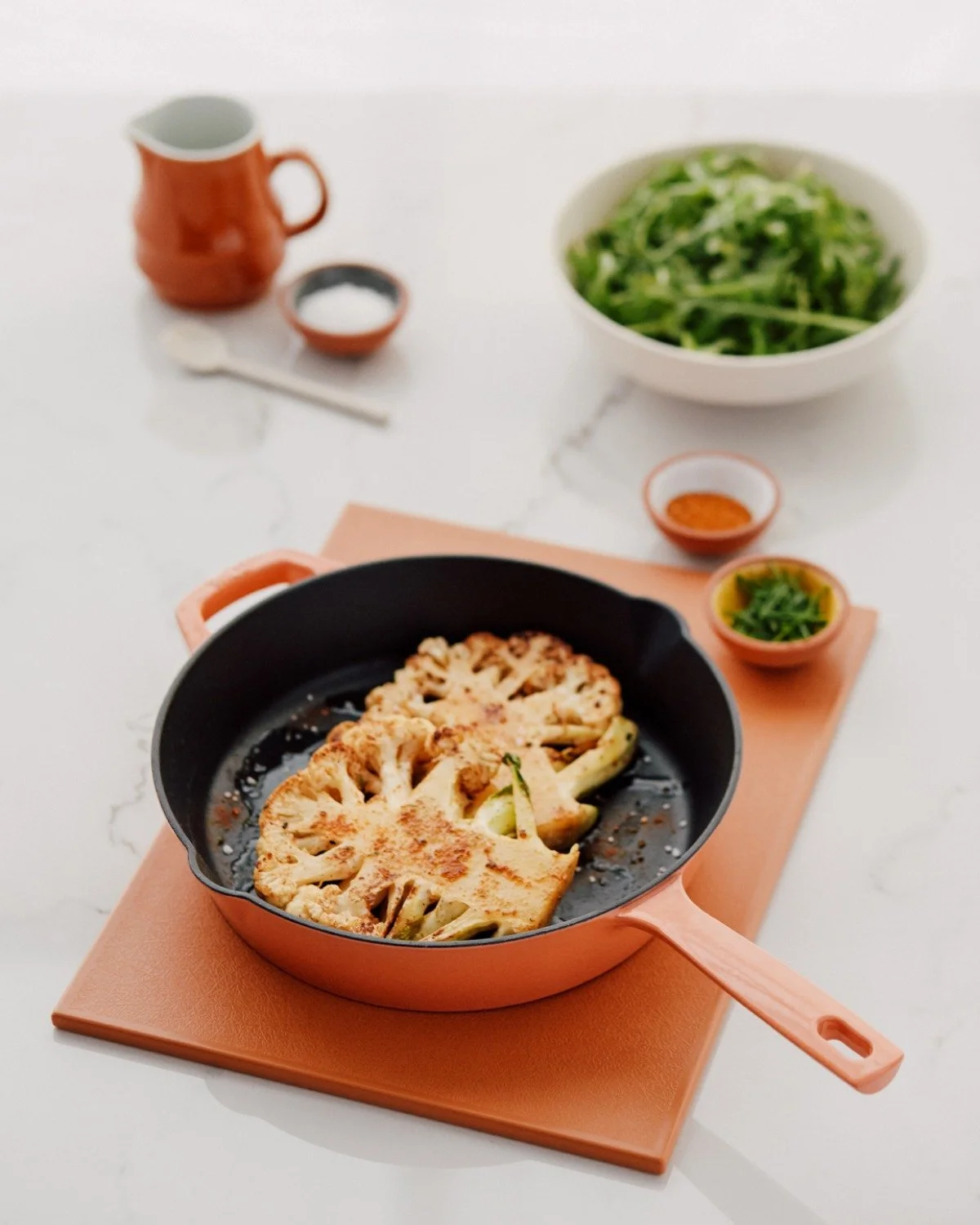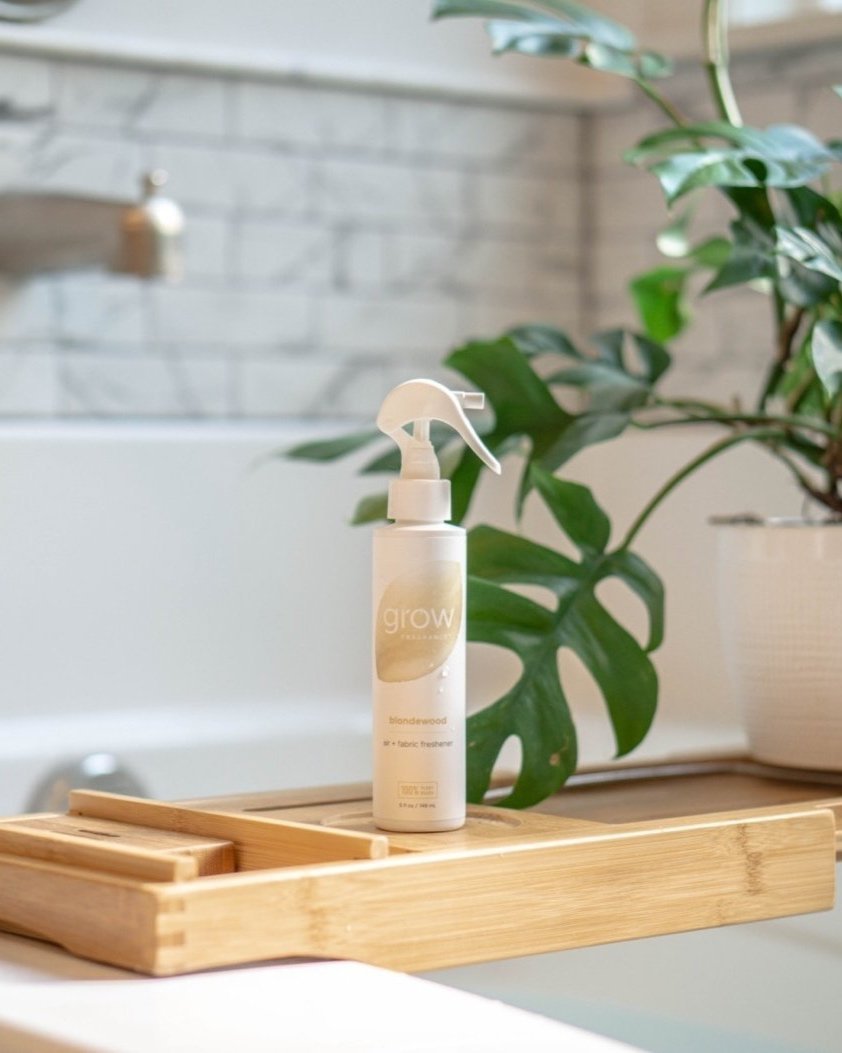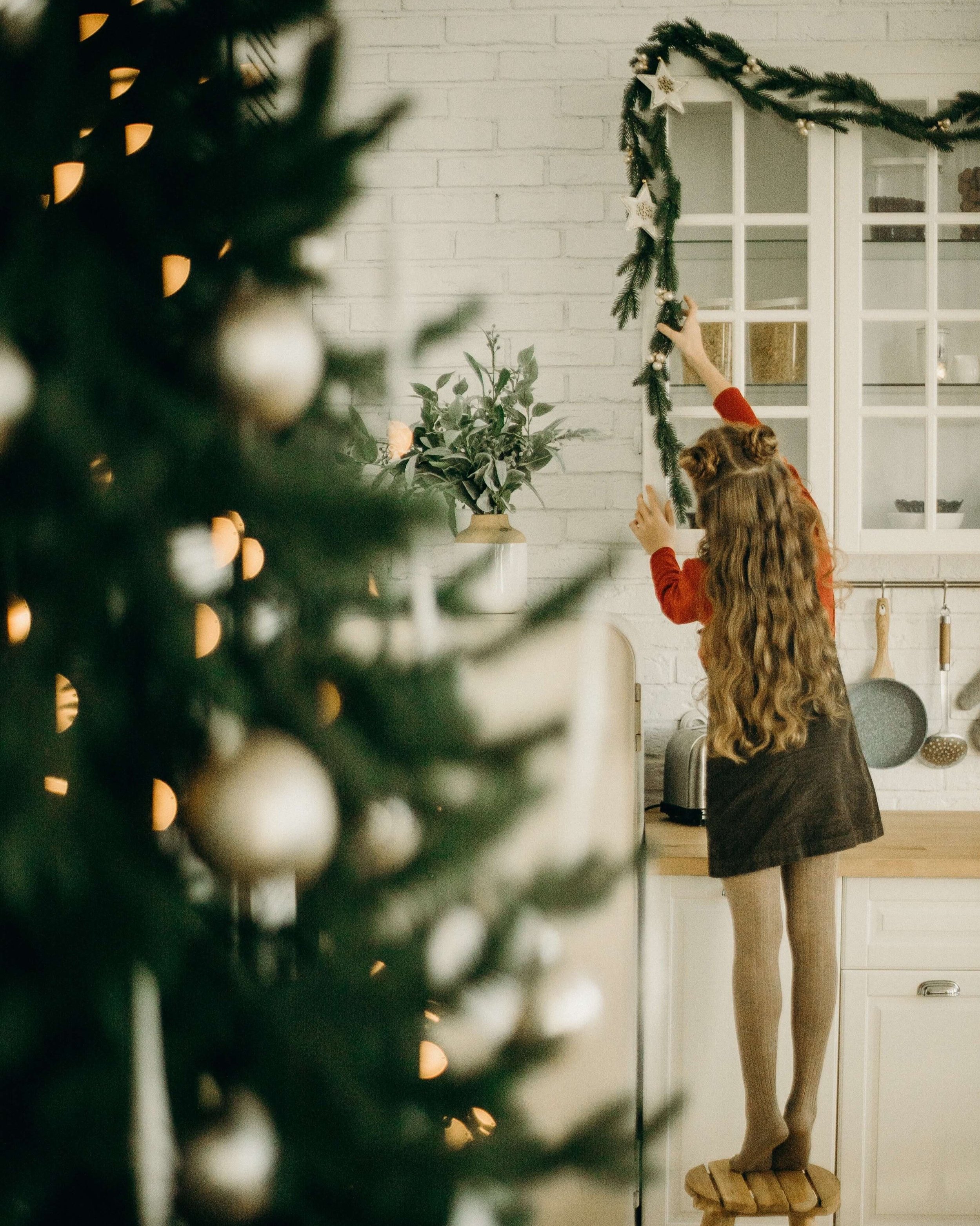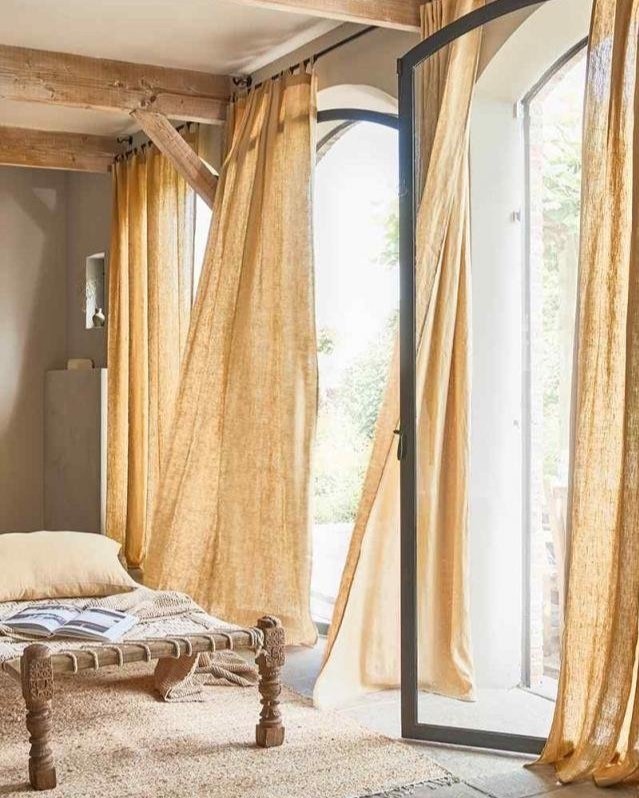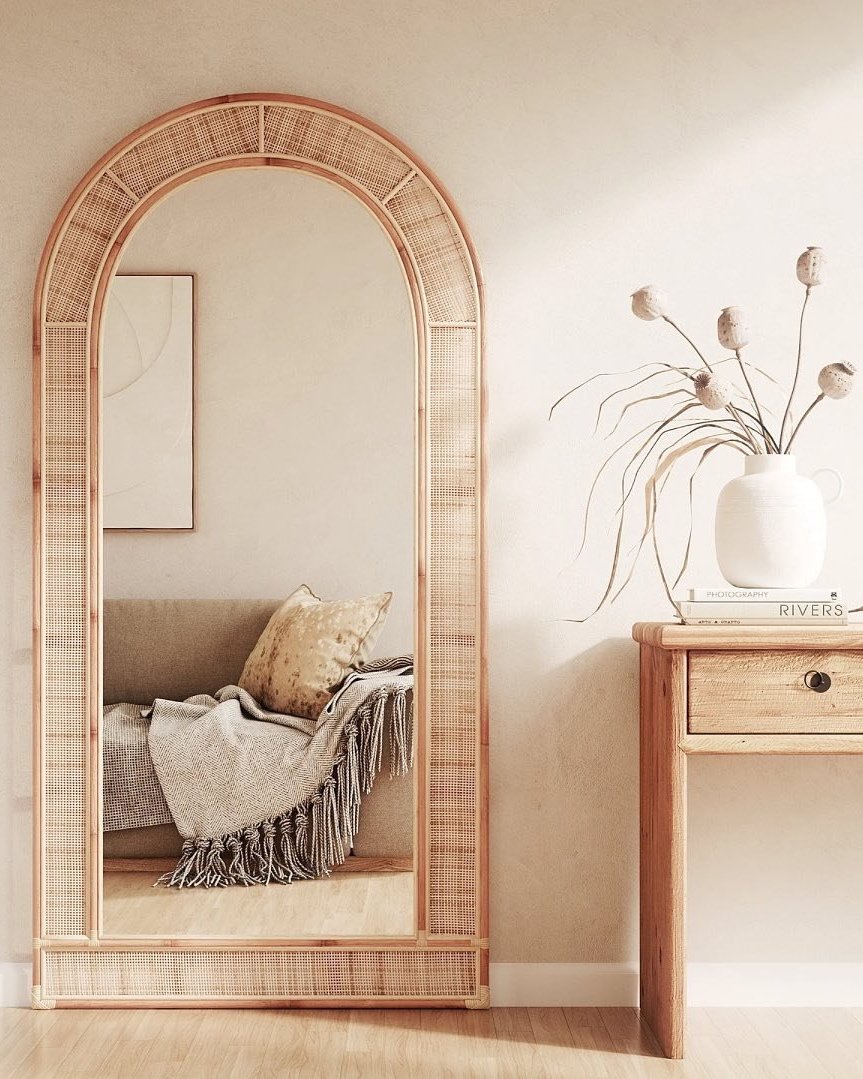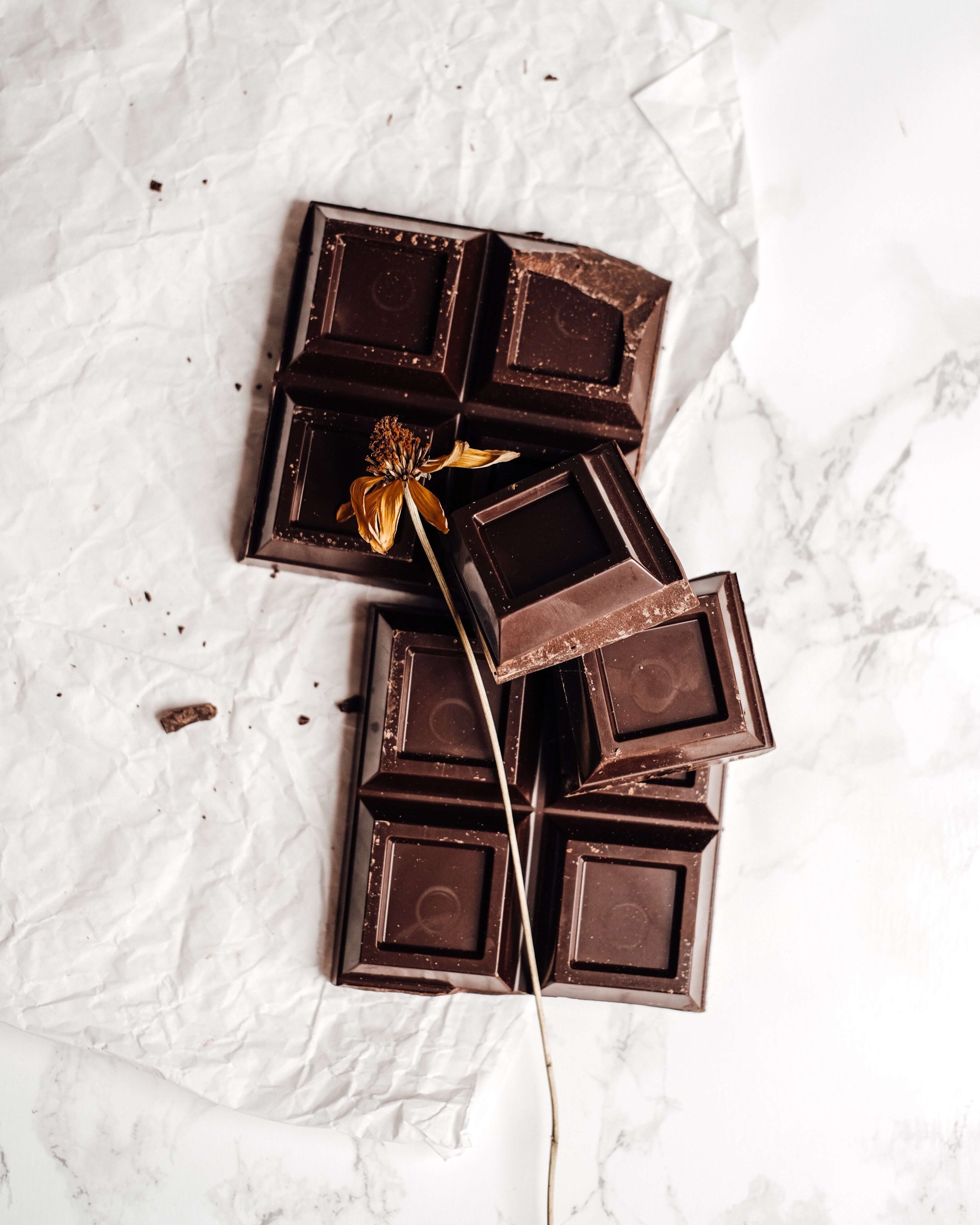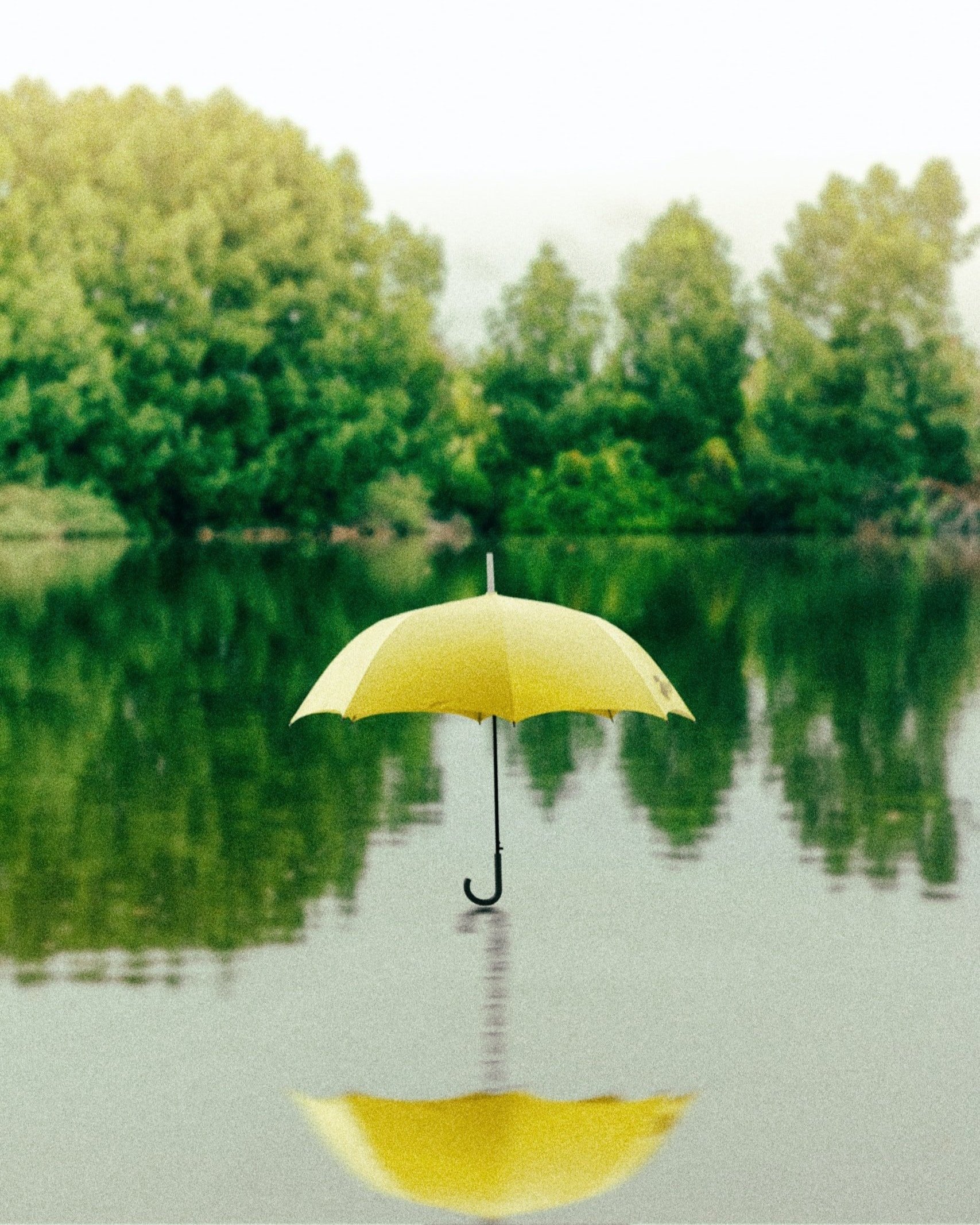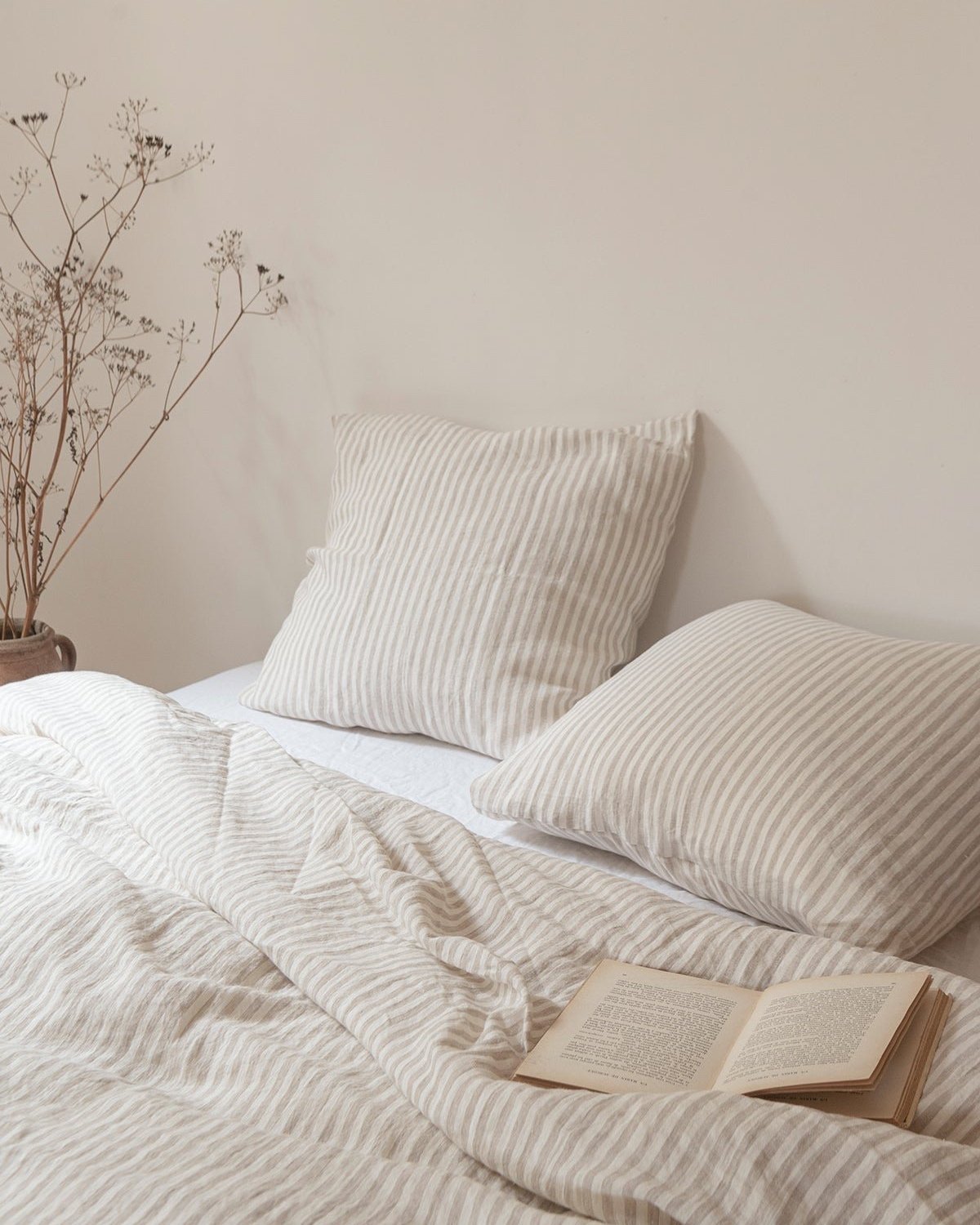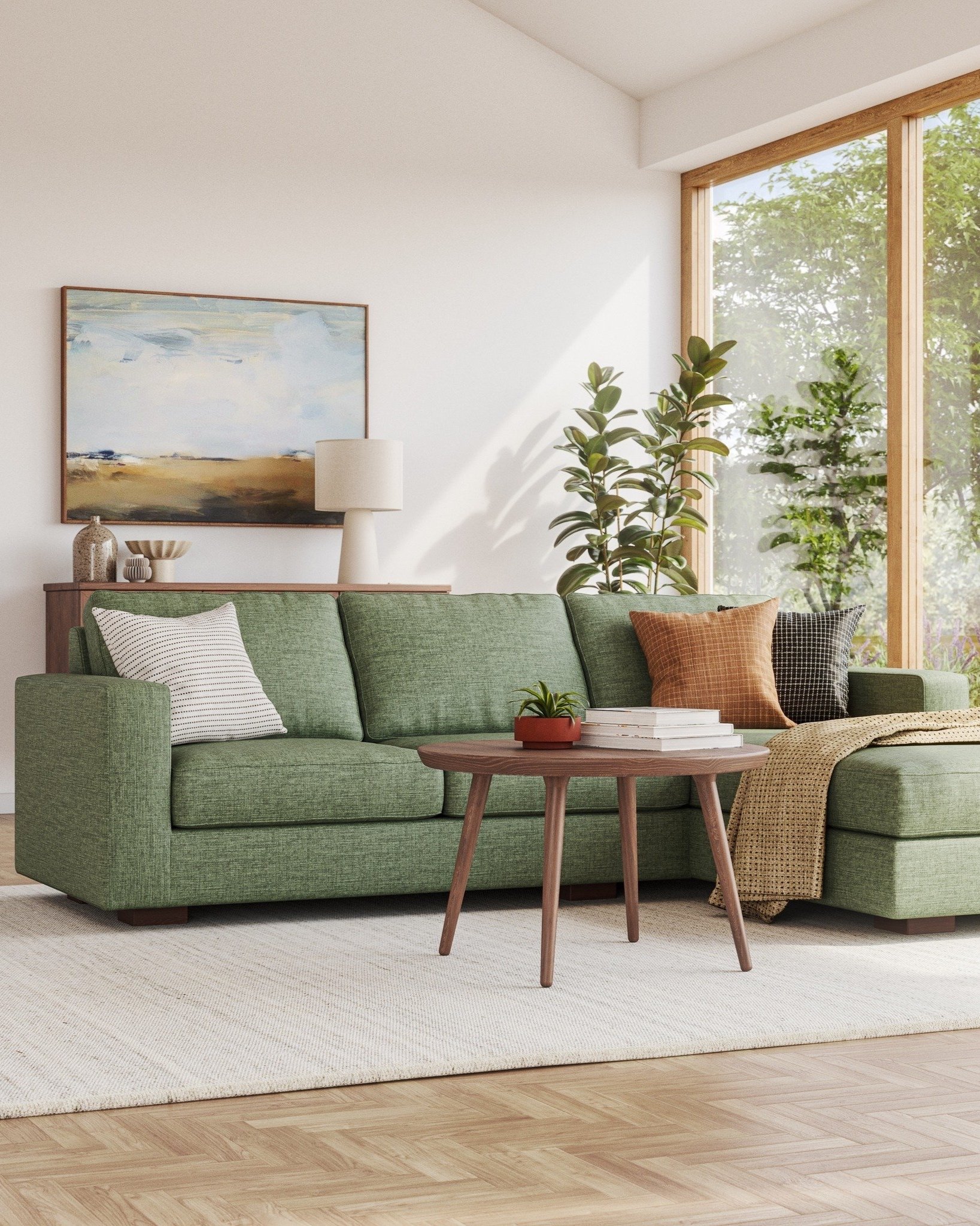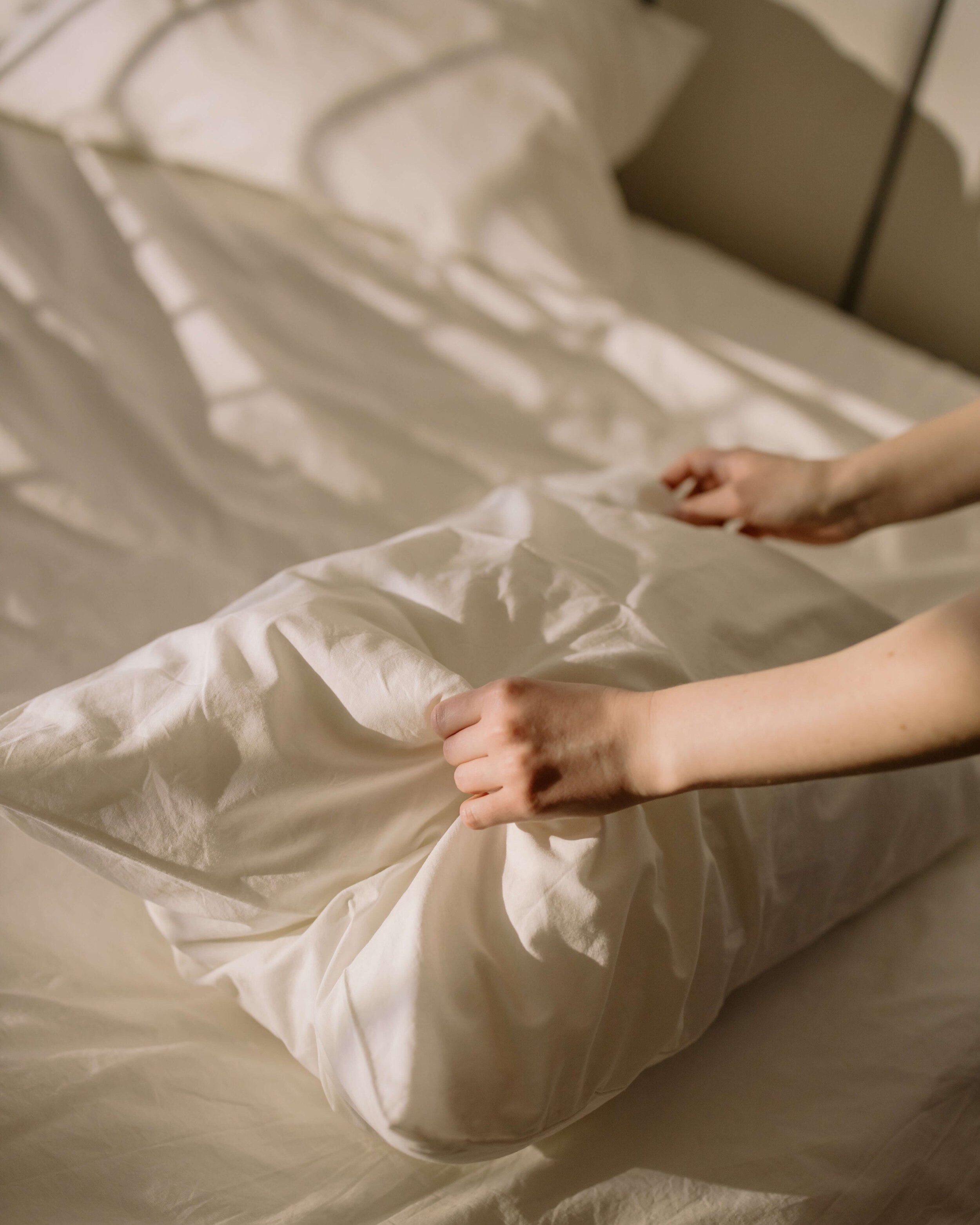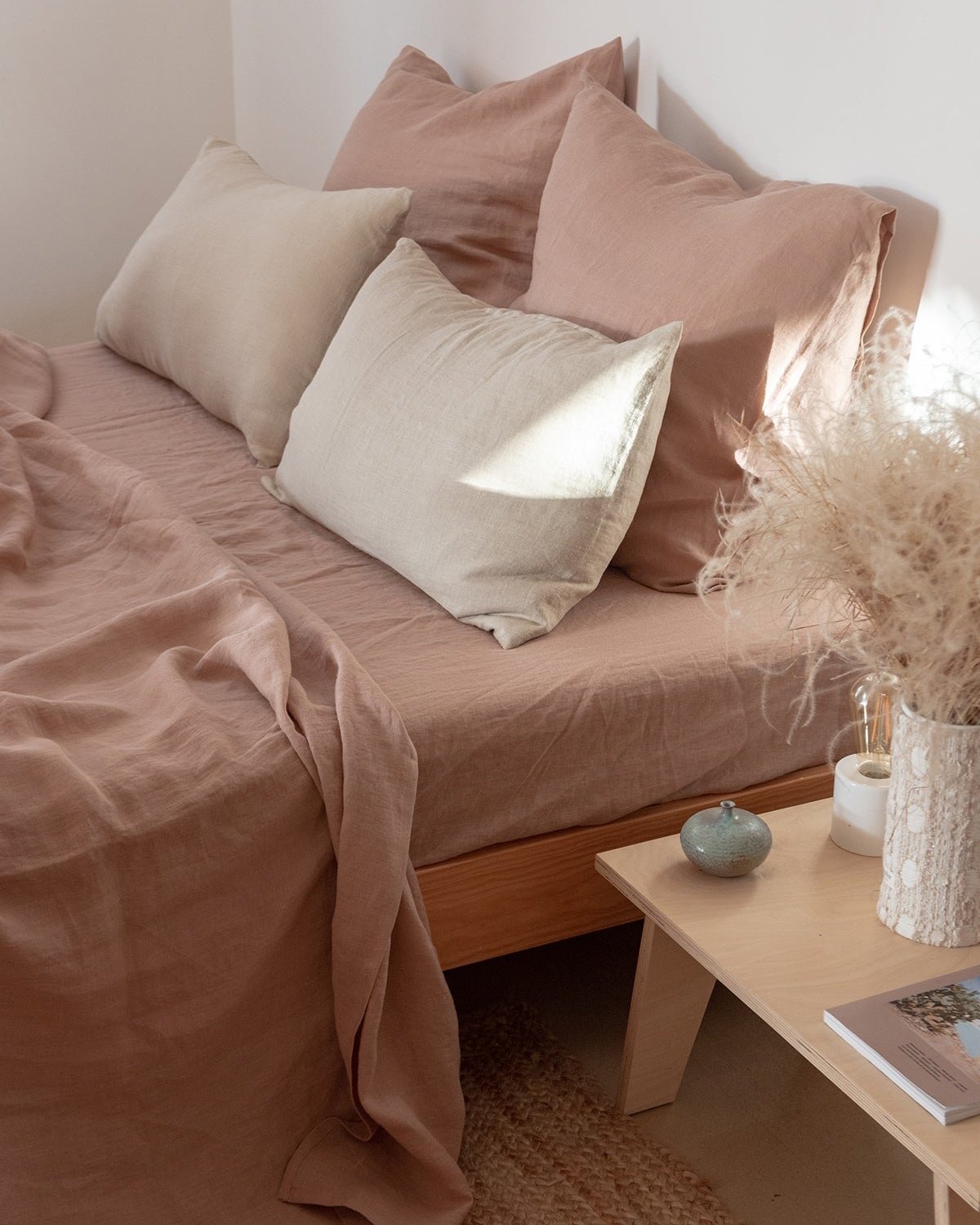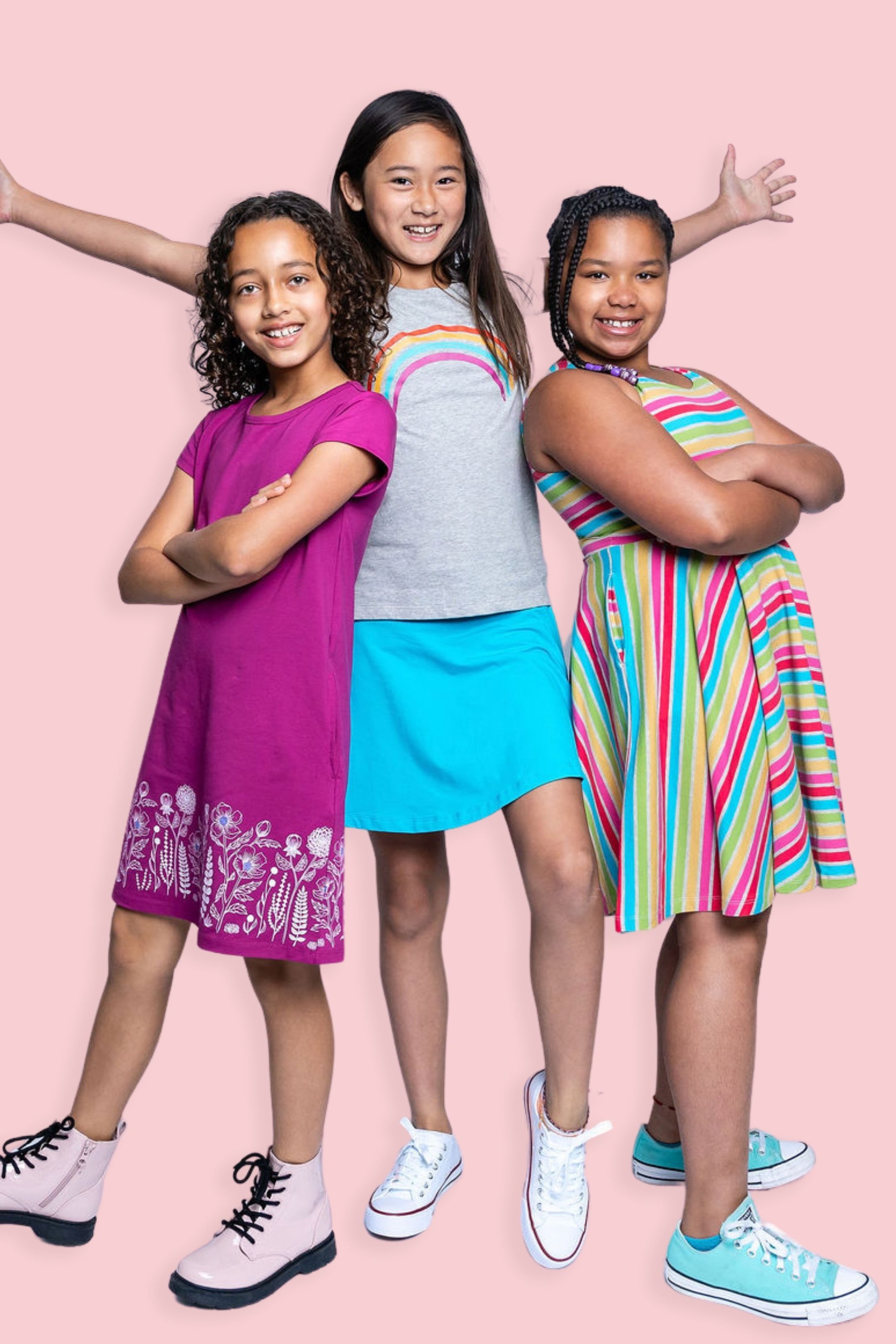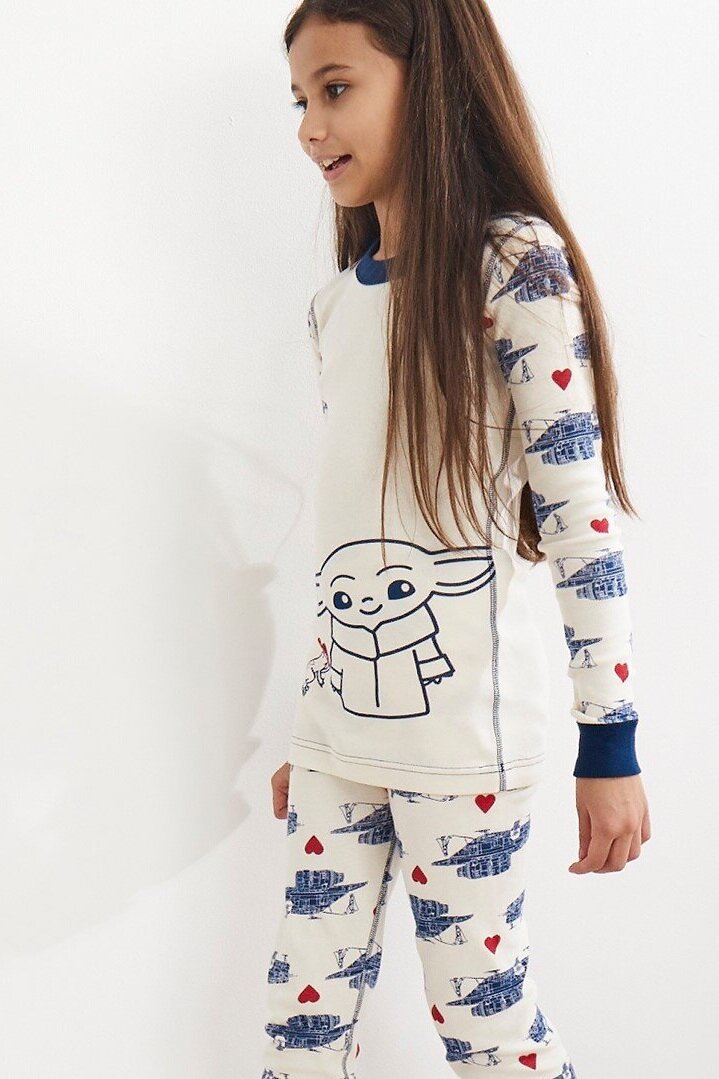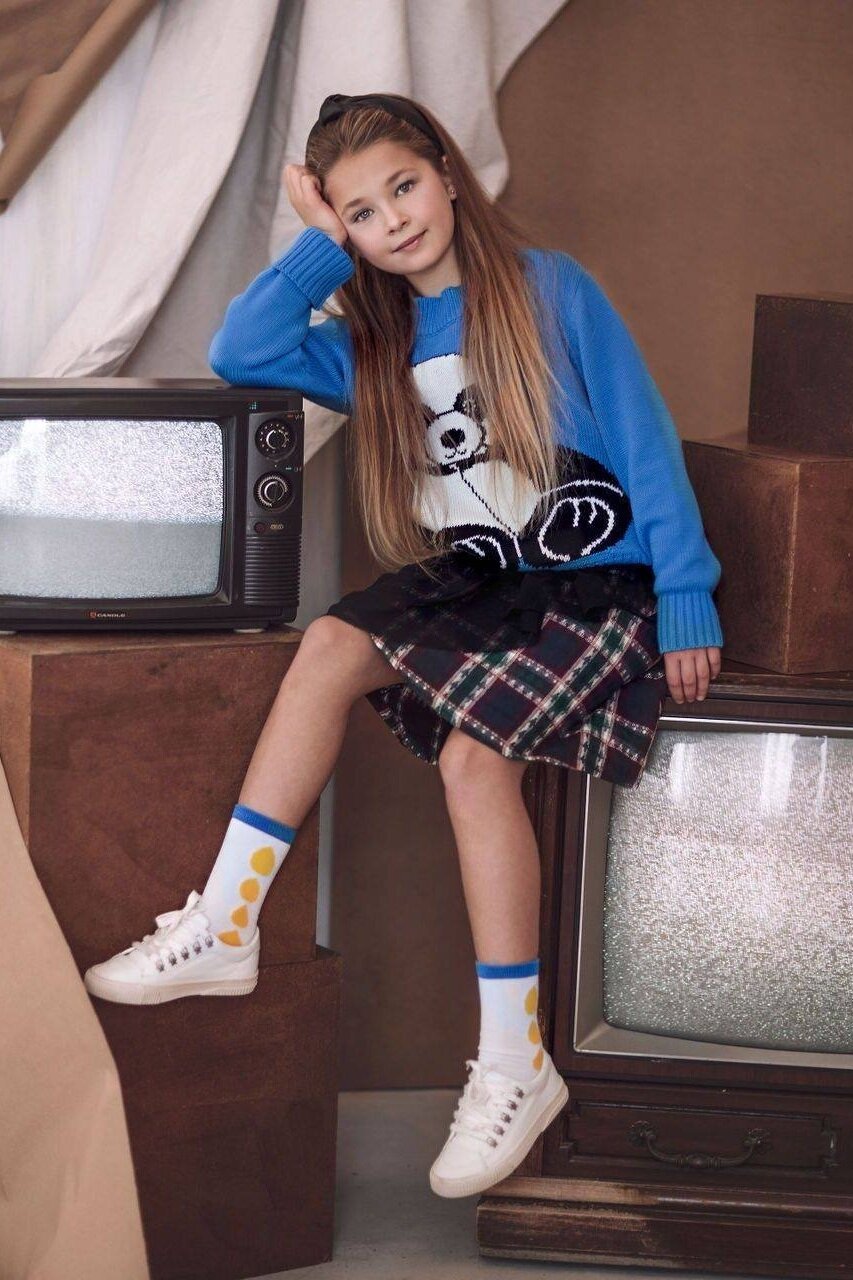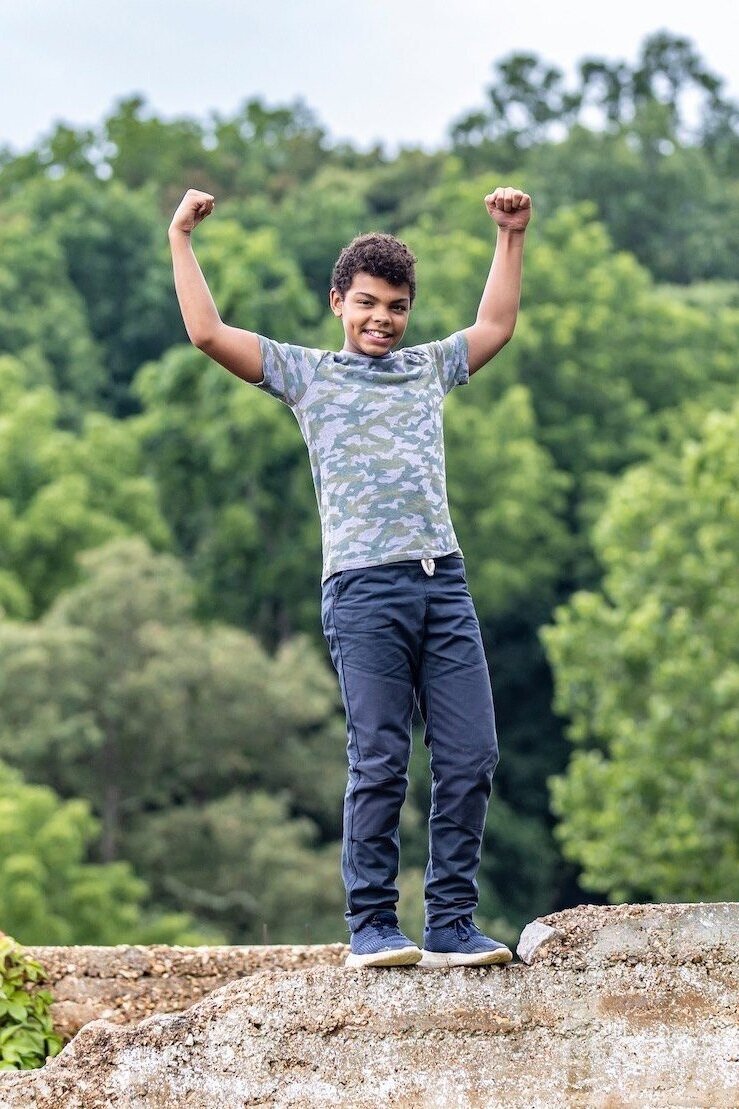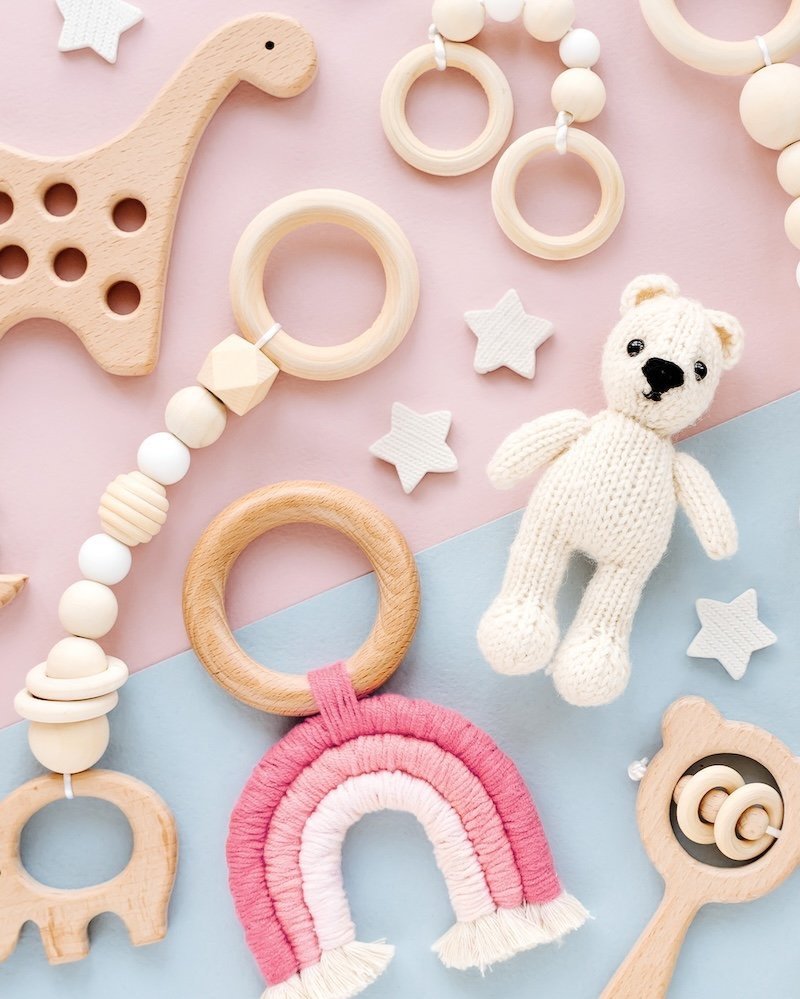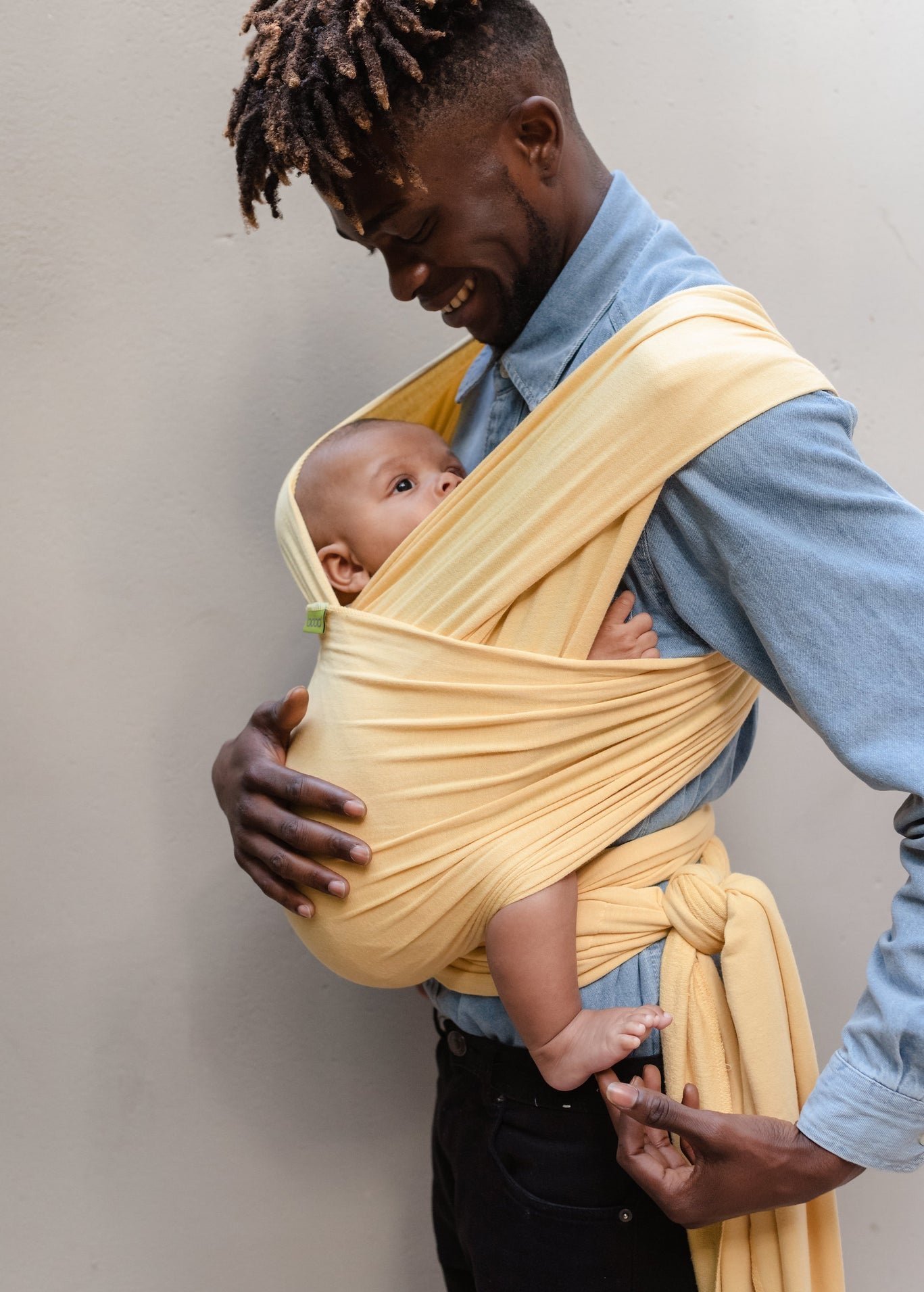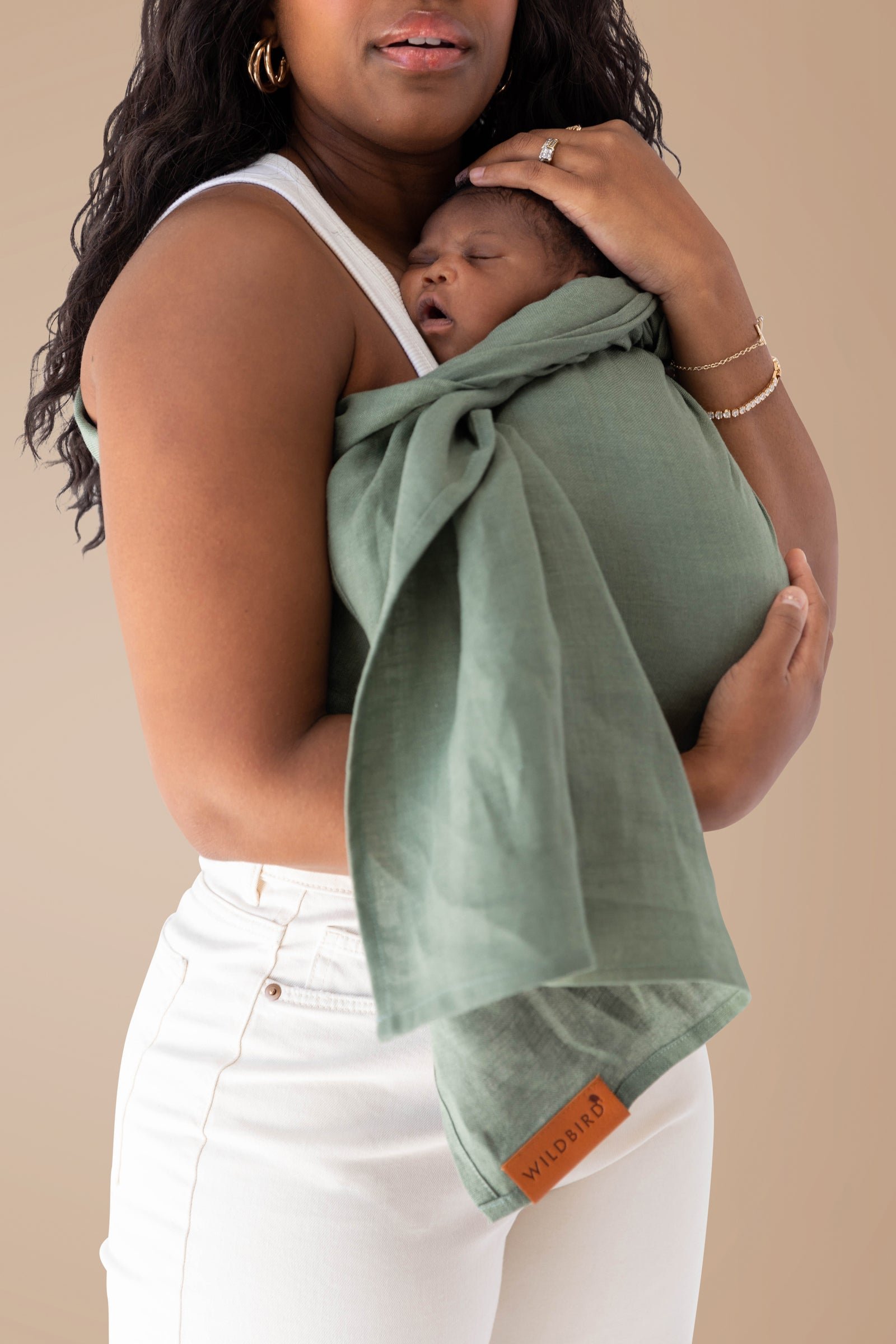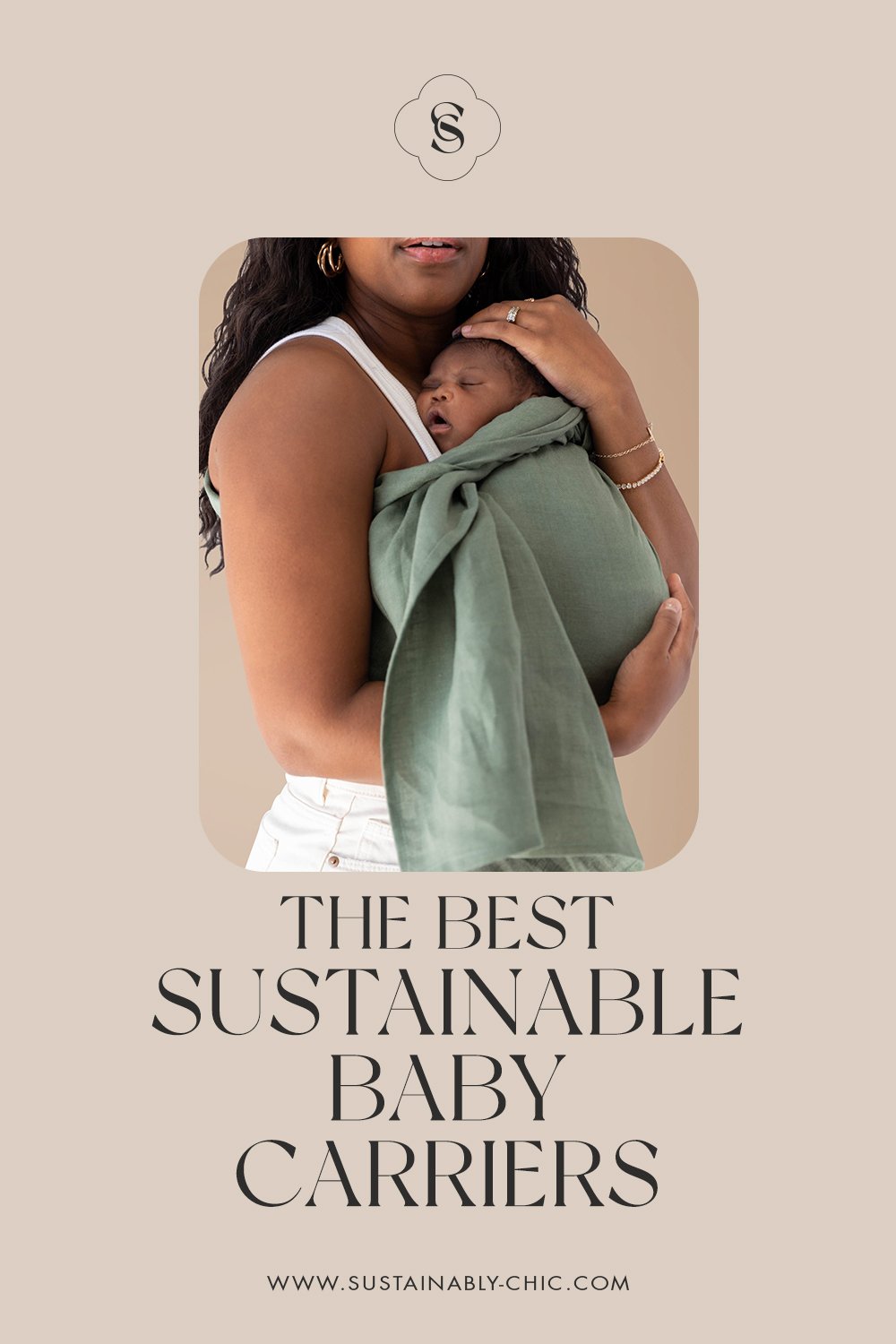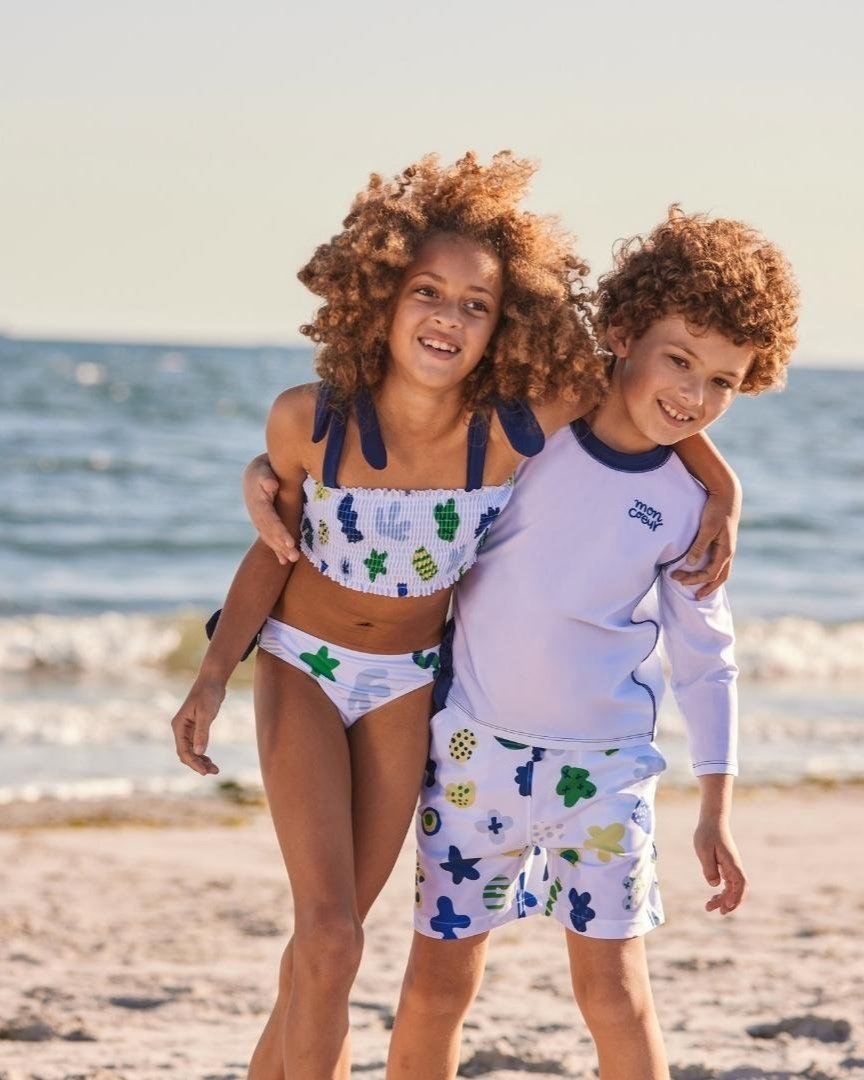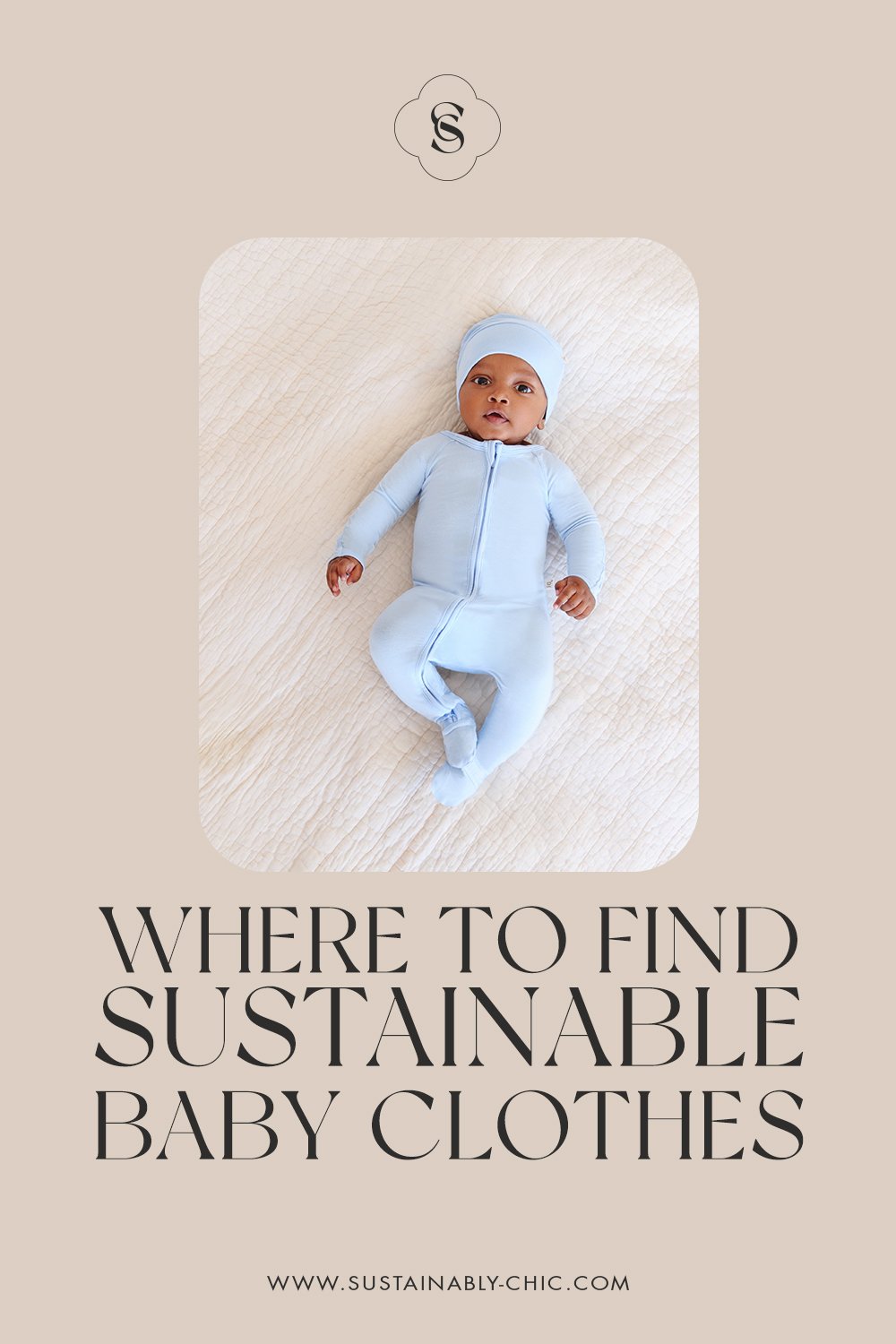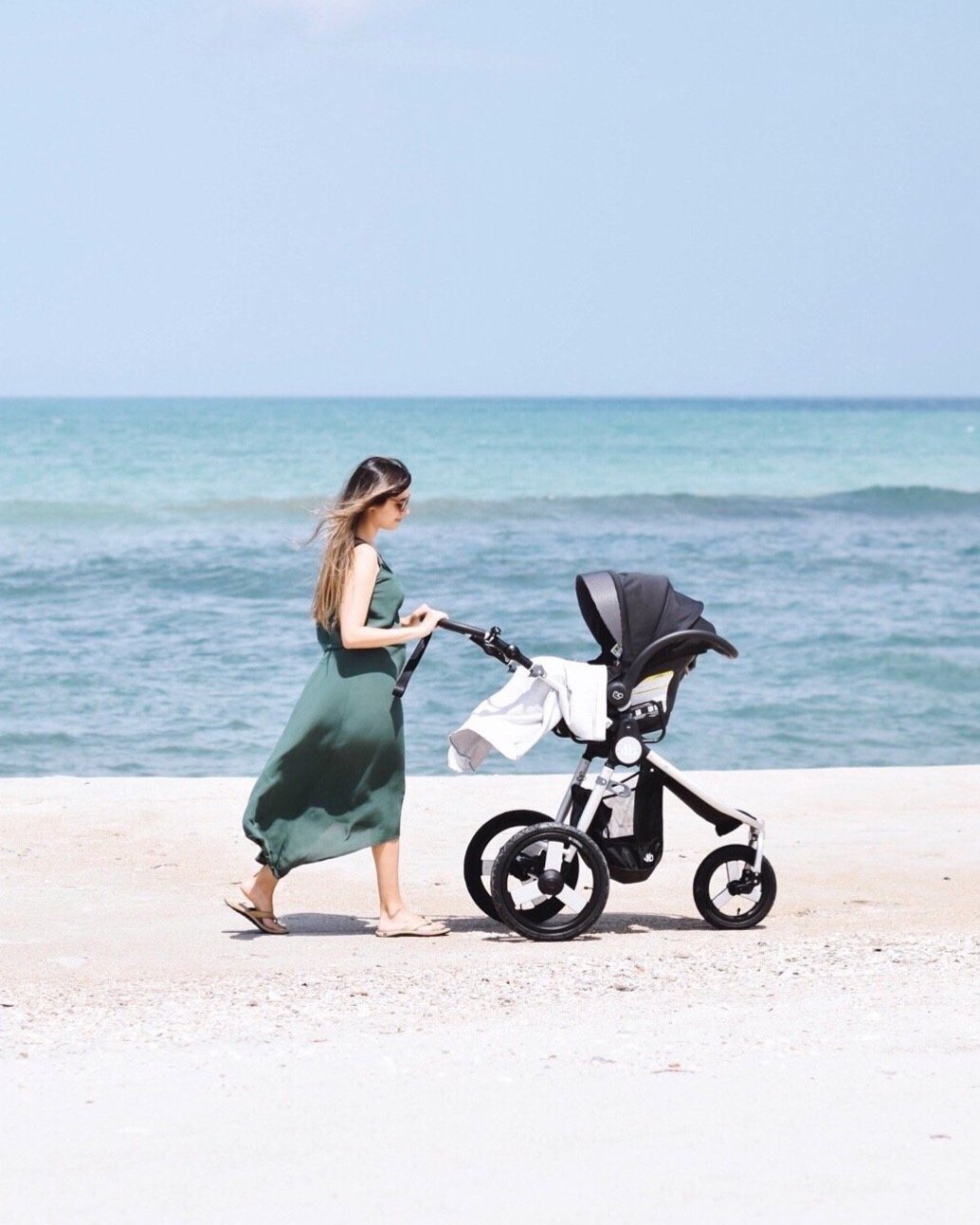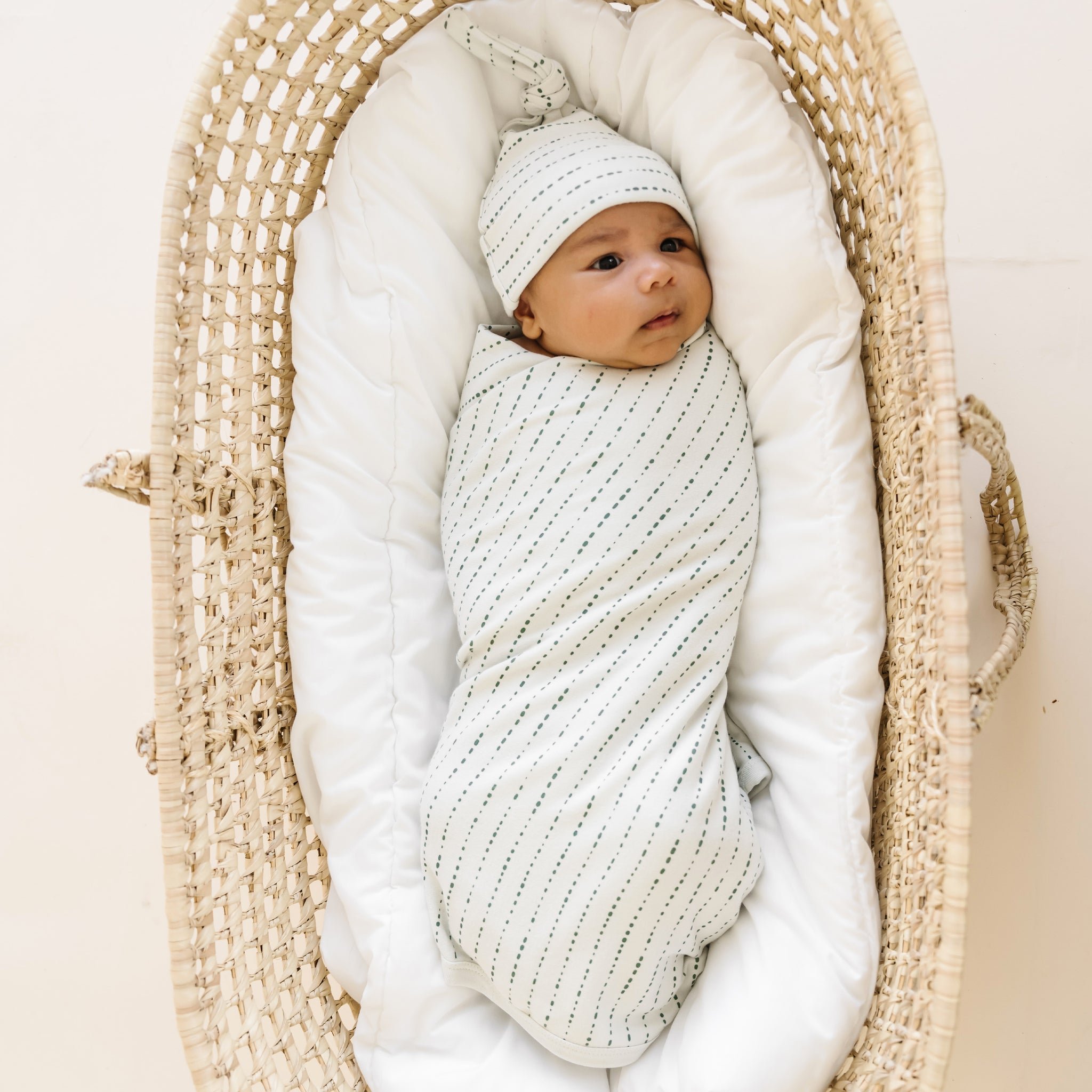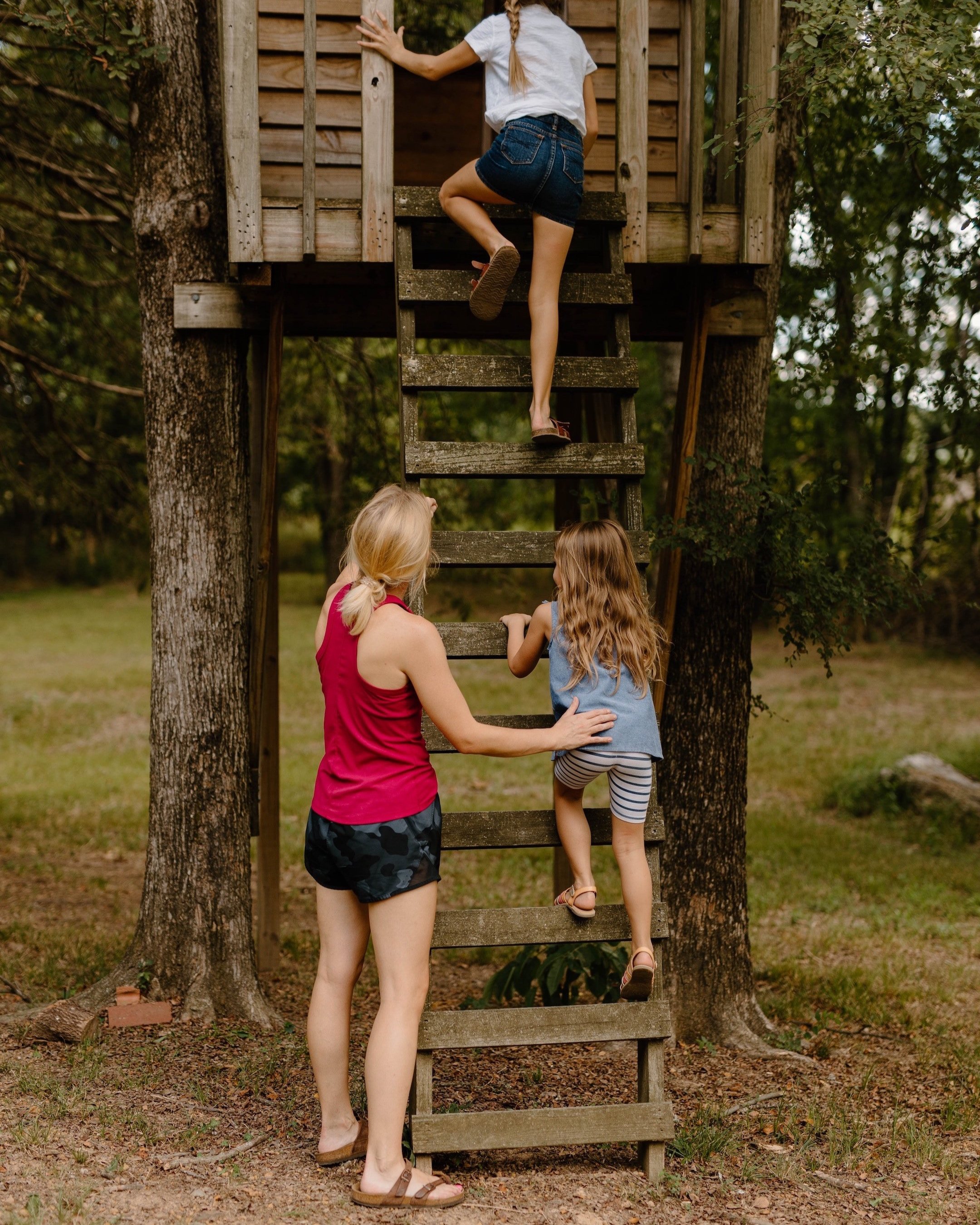image: Inside Weather
Disclosure: Some of the links below are affiliated; we may earn a small commission if you click through and make a purchase. We only ever add brands & products we truly believe in.
HIGH-QUALITY, SUSTAINABLE Dining TABLES, coffee tables & more…
Tables are usually some of the most used furniture pieces in our homes. We use dining tables to eat with our friends and family, and some of us even work and study on them.
Coffee tables are where we put our cup of tea when we are watching TV, where we stack the magazines and books we are currently reading, and where we play board games on weekend nights.
Many people also have side and end tables on which they display beautiful pictures, lamps, and home decor.
Tables are truly at the heart of our homes and daily activities! But most of them are made of cheap, unsustainable materials, and they wear down fairly quickly as we use them every single day.
However, when we need to replace our dearly-loved tables, we can choose to buy more eco-friendly versions that will stand the test of time.
In this article, we have selected 14 sustainable brands selling all kinds of high-quality, durable tables for your eco-home. Thanks to them, you will be able to enjoy your beautiful tables for many years to come!
WHAT MAKES A TABLE SUSTAINABLE?
A sustainable table is one made using high-quality, eco-friendly materials as well as natural, non-toxic and zero-VOC finishes. It needs to be built to last for decades and should age beautifully with time.
A sustainable table is also produced using eco-friendly and ethical manufacturing techniques. The brand should have a take-back and repair program to extend the life of its products, and it should be transparent about its whole supply chain.
WHAT ECO-FRIENDLY MATERIALS SHOULD YOU SEARCH FOR?
Most sustainable tables are made of solid wood since it is a natural and renewable material that is also very durable.
Recycled or reclaimed wood is the most sustainable option you can find! Using this material to make new products reduces the need to cut down more trees, and it reduces waste as we are giving a new life to existing materials.
If you cannot find tables made of reclaimed wood, go for FSC-certified wood. The certification means that the wood was responsibly harvested from sustainably managed forests. The brand should also disclose where the wood comes from: the more locally it sources its wood, the better!
Some eco-friendly tables are also made using recycled aluminum or recycled steel, which are both durable and sustainable materials as well.
OUR TOP PICKS FOR DURABLE, SUSTAINABLE TABLES:
1. Medley
Categories: 4-10 Person Dining Tables, Side Tables, Coffee Tables
Materials: Wood
Price: $875-5,995
Medley is a sustainable brand that handcrafts wooden furniture using premium materials and old-school techniques.
The brand’s dining tables can accommodate four to ten people, and they all have a modern, minimalist design.
Medley also sells various styles of coffee and side tables, some of which feature a practical concealed drawer to store magazines and remote controls.
The company produces all its tables in Los Angeles, California. They are made of solid walnut or maple wood, grown domestically in FSC-certified forests.
Medley protects its furniture pieces by applying natural beeswax and plant-based polishes. It leaves the wood with a matte finish and a subtle glow that accentuates the beauty of the material.
For every tree Medley uses to create one of its pieces, the company plants three other trees in partnership with the National Forest Foundation.
2. Burrow
Categories: Coffee Tables, Side Tables
Materials: Wood, Steel, Marble
Price: $195-795
Burrow is a New York-based furniture brand ideal for people with a passion for American mid-century modernism and Scandinavian style. The company has 4 collections of side & coffee tables, each of which is simple to set up.
The Kettle collection features circular, minimalist-looking tables that are available in different colors.
The base of each table is made of spun steel, and for the tabletop, you can choose between solid ash wood and Italian Carrara marble.
The Carta collection is also worth mentioning: these side and coffee tables have a convenient storage compartment and removable trays that you can use as lap desks on your couch or as serving trays.
The ash wood Burrow uses for its furniture pieces comes from sustainably managed forests located near its factory in Poland. The brand replants all the trees that are used for its manufacturing process to restore the forests.
3. VivaTerra
Categories: 10 Person Dining Tables, Side Tables, Coffee Tables, Café Tables
Materials: Reclaimed Wood, Wood, Steel, Recycled Metal, Seagrass Fibers
Price: $89-5,249
VivaTerra is a sustainable home decor brand selling unique handmade goods for the home and garden.
It has a huge selection of side and coffee tables, as well as a few larger tables.
The brand’s Provence Farm dining table is meticulously handcrafted from reclaimed 19th-century timber, making us think it is an antique farmhouse table. Ten people can easily seat at this table, perfect for large family gatherings!
VivaTerra also has a cool café table made using American and French oak wine barrels if you want more unique furniture pieces! The brand’s coffee and side tables are all inspired by the natural world, and some feature cool designs like fun geometric shapes or hand-carved details.
4. Sabai
Categories: Coffee Table
Materials: Salvaged Wood, Recycled Steel
Price: $595
Sabai is a sustainable brand with a simple collection of couches, home decor and furniture pieces.
The City table from its Essential collection is a must-have coffee table that will elevate any living room!
The brand used the curved and sleek lines of New York’s urban playground as an inspiration for this beautiful table. Very basic yet elegant, the table can be assembled in minutes thanks to its easy-to-follow instructions.
Sabai’s City table is available in three different colors and features a powder-coated recycled steel base. Its tabletop is made of ash wood sourced from fallen trees in Baltimore, Maryland.
The brand is a certified B Corporation that makes to order all its products in a family-owned factory in North Carolina. It sources 90% of its materials within 100 miles of its factory to minimize its environmental footprint.
use code CHIC150 for $150 off orders of $595 or more (cannot be combined with other discounts) expires Aug 31, 2025
5. Savvy Rest
Categories: Coffee Tables
Materials: Wood
Price: $599-724
Savvy Rest is specialized in the creation of organic mattresses, sofas and bedding.
The brand also sells two rectangular coffee tables, made of sustainably sourced maple wood.
With their sleek lines, these two coffee tables feature a minimalist, modern design.
One of them comes with an added lower shelf that is ideal for storing magazines or other living room essentials.
Savvy Rest's coffee tables are available in a variety of zero-VOC finishes, but you can also choose to have them hand-rubbed with linseed oil, or kept in their natural unfinished state.
The maple wood is verified sustainable by the Appalachian Hardwood Manufacturers, and it is durable yet relatively light compared to other types of wood.
Savvy Rest is a Green America Gold-level certified business and a certified B Corporation. It regularly donates pillows to local domestic violence organizations.
6. Masaya & Co.
Categories: Side Tables, Coffee Tables, 4-8 Person Dining Tables, Hall Tables
Materials: Wood, Glass, Steel
Price: $235-2,900
Masaya & Co creates handmade furniture pieces integrating classic and contemporary design with traditional artisan production methods.
Most of the brand’s dining tables can accommodate four to six people, but with the Segovia table, you will be able to have up to 8 people sitting around.
With its geometric design and rounded top, the Chontales dining table even allows you to have heartwarming meals with your loved ones outside!
Masaya & Co also has various coffee, side and hall tables of different styles and colors. We particularly love the Velero side table, which reminds us of the hull of a sailboat!
All the brand’s tables are handcrafted in Nicaragua using sustainably sourced teak wood grown on deforested cow pastures.
7. The Citizenry
Categories: Side Tables, Coffee Tables
Materials: Rattan, Steel, Wood, Palm
Price: $295-1,390
The Citizenry is a one-stop shop for everything sustainable, from eco-friendly furniture to home decor and textiles.
The brand has different coffee and side tables that are all handcrafted by talented artisans from all over the world. The majority of its tables are made in Indonesia from locally-sourced rattan that is wrapped around a steel frame.
The Citizenry also sells small tables made with natural palm leaves and sustainably harvested teak or cypress wood. All the coffee and side tables are produced in small batches and take up to seven days to be completed.
The company creates its products with a process audited and guaranteed by the World Fair Trade Organization. The Citizenry also pays its makers twice the fair trade wage requirement, and it reinvests 10% of its proceeds back into the artisan communities.
8. Avocado
Categories: End Tables, Side Tables, Coffee Tables
Materials: Wood, Reclaimed Wood
Price: $329-899
Avocado is a leader in the production of natural, organic mattresses, pillows and bedding. The brand also sells furniture, including several kinds of coffee, side and end tables. All the company’s tables are statement pieces that are thoughtfully designed and beautifully made in Avocado’s FSC-certified woodshop in Los Angeles.
They are made from reclaimed wood, red cedar or upcycled beechwood using non-toxic finishes.
The tables come with a ten-year warranty, and they are GreenGuard Gold certified, meaning that they meet the most stringent standards for low indoor emissions and health-based criteria.
Avocado is a certified B Corporation that is also climate-neutral and Fair Trade certified. Plus, it donates 1% of its revenues to nonprofits through 1% For The Planet.
9. Neighbor
Categories: Coffee Tables, Side Tables, 4-6 Person Dining Tables
Materials: Wood
Price: $450-2,200
Neighbor creates modern outdoor furniture pieces that are all thoughtfully designed, modular and water-resistant. It offers four tables of different shapes, dimensions and colors.
Made for comfortable outdoor dining, the brand’s dining table can seat four or six people.
It features a slatted surface with adjustable levelers on the legs as well as a built-in hole for umbrellas.
Neighbor also sells a wooden rectangular coffee table with a rugged roped shelf for added storage. Its round side and coffee tables have a hand-poured concrete tabletop and a solid wooden base.
All the brand’s tables are made of FSC-certified teak wood using extremely durable hardware. Teak wood has great water-repelling properties, making it very resistant to heavy rain and extreme weather.
10. Emeco
Categories: Bar Tables, 6-Person Dining Tables, Coffee Tables, Side Tables, Café Tables
Materials: Recycled Aluminum, Wood
Price: $981-6,118
Emeco was founded in 1944 with a mission to create chairs out of salvaged aluminum for the US Navy.
The brand has then continued selling furniture, and as of today, 90% of its products are made from recycled materials.
Emeco sells a very wide variety of tables, from bar tables to dining tables. Made in the USA, each table has an extremely simple, geometric design, but they are all created with functionality in mind.
You can choose between many shapes, heights and tabletop sizes. Some tables are even created for outdoor use, which is perfect if you are looking for a small table for a balcony!
All Emeco’s tables are made from recycled aluminum, the brand’s signature material. Some tabletops are also made of locally and sustainably harvested walnut or ash wood.
11. Mater
Categories: Side Tables, Coffee Tables, 2-8 Person Dining Tables
Materials: Wood, Steel, Coffee Waste, Wood Waste, Upcycled Plastic Waste
Price: $405-3,397
Mater is a Danish brand selling furniture, lighting and other home goods with a focus on design, functionality and sustainability. It has a great selection of coffee tables, side tables and dining tables of various shapes and sizes.
Mater’s Accent oval dining tables are available in three different sizes. They combine a sculptural and handcrafted aesthetic, and they are made of solid FSC-certified oak. The brand also offers two rectangular dining tables that can be used as desks or meeting tables.
For your living room, you can choose one of Mater’s round side tables or coffee tables. Their sustainably harvested mango wood is incredibly beautiful! But for a more unique version, Mater makes three models using upcycled coffee, wood and plastic waste!
12. Skagerak
Categories: 4-8 Person Dining Table, Office Tables, Side Tables
Materials: Wood
Price: $325-5,579
Founded in 1976, Skagerak is a Danish brand creating high-quality indoor and outdoor furniture designed to last for generations.
It offers many round and rectangular dining tables that can seat four to eight people. Skagerak has several side tables that are extremely versatile as they can also be used as bedside tables or stools, and they are very easy to integrate into most home decors.
Another multipurpose furniture piece is the brand’s two-legged console table. Fitted against the wall, it can serve as a make-up vanity in the bedroom, a welcoming station in the entryway, or even as a TV stand in the living room.
Skagerak’s tables are made of FSC-certified oak wood, and the brand is very transparent regarding where its materials come from and where the products are made.
The company is a certified B Corporation and a member of the UN Global Compact Act.
13. Inside Weather
Categories: 4-6 Person Dining Tables, Coffee Tables, Side Tables, Kitchen Tables
Materials: Wood, Plywood, Steel
Price: $169-900
Inside Weather is a sustainable brand making custom furniture at affordable prices. It has a great selection of dining tables, coffee tables and side tables, all made with high-quality materials in California.
The company’s dining tables can accommodate up to six people, and they are made of FSC-certified plywood.
Its Vienna tables even feature an optional built-in power unit that is tucked away under a slidable surface lid. Perfect if you want your table to double as a workspace!
Inside Weather’s coffee and side tables are also made to be beautiful and highly functional at the same time. Each piece is hand-sanded and made-to-order, and you can customize it according to your preferences.
14. From The Source
Categories: End/Side Tables, Coffee Tables, 2-10 Person Dining Tables, Console Tables
Materials: Salvaged Wood, Wood, Steel, Iron
Price: $215-6,255
From The Source makes sustainably sourced hardwood furniture & accessories for the home using eco-friendly, reused & repurposed materials.
The company offers a wide array of tables of all kinds, shapes and heights.
You can find small dining tables ideal for two people, but if you have a big family, From The Source has larger models that can accommodate eight to ten people.
The brand also has various styles of coffee and side tables. You will especially fall in love with its Cumi side tables, which feature unique shapes and look like they have animalistic personalities. They are made from salvaged tree trunks and roots, making them one-of-a-kind pieces.
From The Source also has different outdoor models and two console tables. The brand makes its tables using solid hardwood from different trees, including teak and mango trees.
About the Author:
Eva Astoul is a French freelance writer, specializing in content related to sustainability, simple living, and a growth-focused healthy lifestyle. She runs her own blog, Green With Less, to inspire people to live a more minimalist and sustainable life.
MAKE SURE TO PIN THE PHOTO BELOW TO SAVE THIS POST FOR LATER!
WANT TO FIND MORE SUSTAINABLE BRANDS?
The Brand Directory features hundreds of sustainable brands approved by us!
We have broken everything down by category for easy shopping, along with discount codes unique to Sustainably Chic viewers.




















